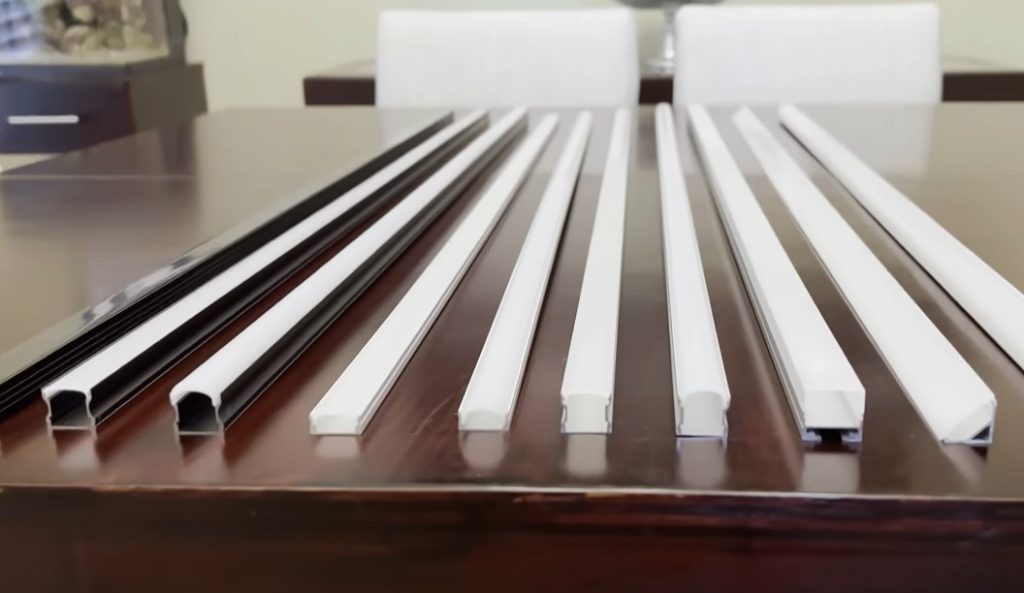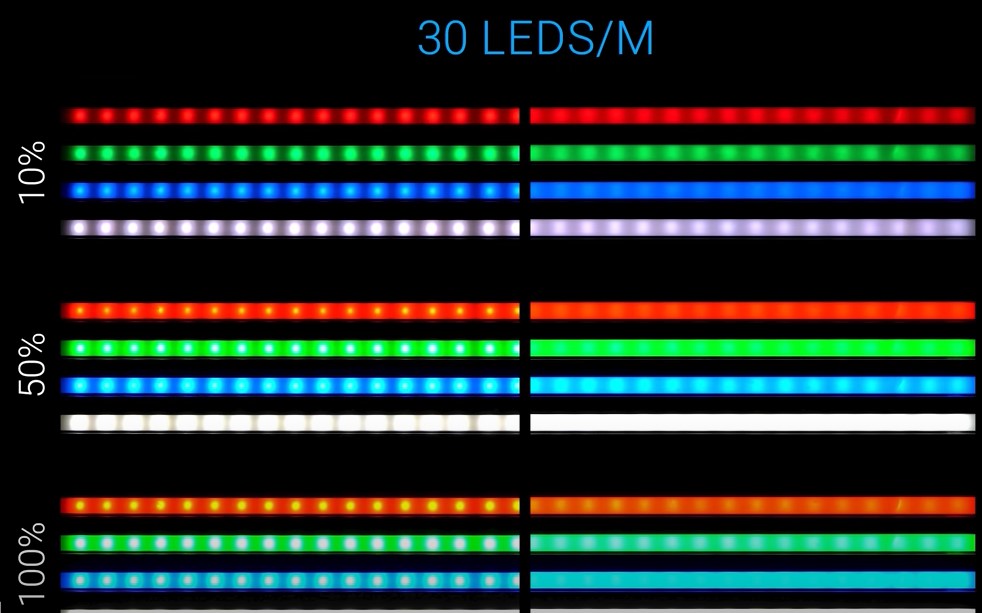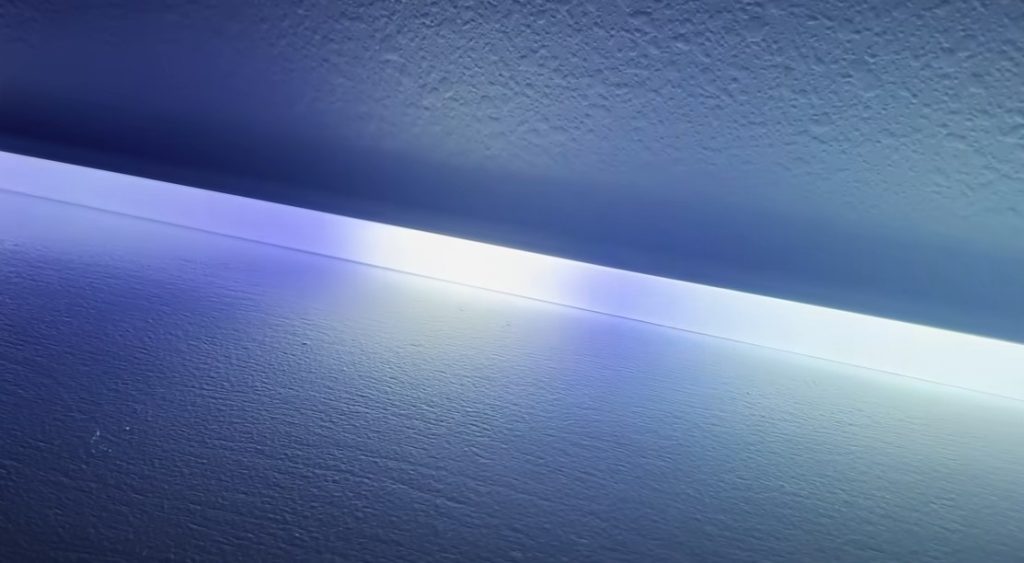LED Strip Light Diffusers: The Ultimate Guide
Imagine a brilliantly lit room, the light soft and even, devoid of harsh glare or distracting hotspots. This is the magic of a LED strip light diffuser. This comprehensive guide will demystify LED strip light diffusers, exploring their functionality, benefits, installation, and much more. We’ll cover everything from choosing the right diffuser to troubleshooting common…
Imagine a brilliantly lit room, the light soft and even, devoid of harsh glare or distracting hotspots. This is the magic of a LED strip light diffuser. This comprehensive guide will demystify LED strip light diffusers, exploring their functionality, benefits, installation, and much more. We’ll cover everything from choosing the right diffuser to troubleshooting common issues, ensuring you can transform your lighting setup with ease and expertise. Prepare to become an expert in all things LED strip light diffusion!
LED strip lights, known for their energy efficiency and versatility, can sometimes produce harsh, direct light. This is especially true with higher-intensity LEDs or when the strips are installed directly against a surface. A diffuser addresses this issue by softening the light, distributing it evenly, and eliminating those unwanted hotspots.
What Is LED Strip Light Diffusers?
An LED strip light diffuser is a material placed over or around your LED strip lights. Its primary function is to scatter the light, reducing glare and creating a softer, more ambient glow. This can dramatically improve the overall aesthetic and comfort of your lighting. Diffusers come in a variety of materials, each offering unique optical properties.
Types of LED Strip Light Diffusers

Acrylic Diffusers
Acrylic diffusers are popular for their clarity, durability, and ability to evenly distribute light. They’re often used in applications requiring a bright, yet soft illumination.
Silicone Diffusers
Silicone diffusers are flexible, durable, and water-resistant, making them ideal for outdoor or damp environments. Their flexibility allows them to conform to curved surfaces.
Opal Diffusers
Opal diffusers offer a frosted, milky appearance, resulting in a very soft, diffused light. They are excellent for creating a warm and inviting atmosphere.
PC Diffusers
Polycarbonate (PC) diffusers are robust and impact-resistant, suitable for high-traffic areas or situations where durability is paramount.
The Science Behind Light Diffusion
Light diffusion is the scattering of light rays as they pass through a material. Diffusers work by creating a series of internal reflections and refractions, breaking up the direct light source into a broader, less focused beam. The material’s optical properties (like refractive index and surface texture) determine the degree of diffusion.
Related Article: LED Strip Light Diffusers: The Ultimate Guide
Key Features of Effective LED Strip Light Diffusers

An effective diffuser should offer a balance of light diffusion, durability, and ease of installation. Consider these key features:
- Light Transmission: How much light passes through the diffuser. Higher transmission means brighter light, but potentially less diffusion.
- Diffusion Angle: The spread of light after passing through the diffuser. A wider angle means more even light distribution.
- Material: Choose a material suitable for your environment (indoor, outdoor, damp). Consider durability and ease of cleaning.
- Clarity: The transparency of the diffuser. Clearer diffusers allow more light through, while frosted diffusers provide softer light.
Benefits of Using an LED Strip Light Diffuser
The advantages extend beyond aesthetics. Diffusers enhance the overall lighting experience:
- Reduced Glare: Eliminates harsh, direct light, reducing eye strain.
- Improved Comfort: Creates a softer, more pleasant lighting environment.
- Enhanced Aesthetics: Transforms the look of your LED strip lights, creating a more sophisticated appearance.
- Even Light Distribution: Minimizes hotspots and shadowing, ensuring even illumination.
- Increased Energy Efficiency: By directing light where it’s needed, diffusers can improve the efficiency of your lighting.
Limitations of LED Strip Light Diffusers

While beneficial, diffusers have some limitations:
- Light Loss: Some light is always lost during diffusion. This is the trade-off for softer, more even lighting.
- Cost: Diffusers add to the overall cost of your lighting project.
- Installation Complexity: Depending on the diffuser and your setup, installation can be time-consuming.
- Material Degradation: Over time, some materials may yellow or degrade, impacting their light transmission and diffusion properties.
Related Article: Small Girly lighting room ideas
Choosing the Right LED Strip Light Diffuser
Selection depends on several factors:
- Type of LED Strip: Consider the color temperature and intensity of your LEDs.
- Application: Indoor, outdoor, or damp location?
- Desired Light Effect: Bright and clear, or soft and diffused?
- Budget: Prices vary widely depending on material, size, and quality.
Installing LED Strip Light Diffusers
Installation varies greatly depending on the type of diffuser and your setup. Some diffusers can simply be adhered to the strip, while others may require more complex mounting methods. Always refer to the manufacturer’s instructions for specific guidance.
DIY vs. Pre-Made Diffusers
You can create your own diffusers using materials like frosted acrylic or frosted plastic sheets. Pre-made diffusers offer convenience and consistency but might be more expensive. DIY options allow for customization but require more skill and effort.
Comparing Different LED Strip Light Diffuser Materials
Here’s a table comparing common materials:
| Material | Light Transmission | Diffusion Angle | Durability | Water Resistance | Cost |
|---|---|---|---|---|---|
| Acrylic | High | Medium | High | Low | Medium |
| Silicone | Medium | High | High | High | High |
| Opal | Low | High | Medium | Low | Low |
| PC | High | Medium | Very High | Low | High |
Troubleshooting Common LED Strip Light Diffuser Issues
Addressing common problems can keep your lighting running smoothly.
- Uneven Light Distribution: Ensure proper installation and consider a diffuser with a wider diffusion angle.
- Yellowing or Degradation: Choose high-quality materials resistant to UV degradation.
- Poor Light Transmission: Check for air bubbles or imperfections in the diffuser material.
LED Strip Light Diffuser Applications
Diffusers find applications in diverse settings:
- Residential Lighting: Under-cabinet lighting, cove lighting, accent lighting.
- Commercial Lighting: Retail displays, restaurant lighting, office spaces.
- Automotive Lighting: Interior ambient lighting.
- Custom Lighting Projects: Creating unique and personalized lighting effects.
Frequently Asked Questions
What is an LED strip light diffuser used for?
An LED strip light diffuser is primarily used to soften and spread the light emitted by LED strips, improving the overall aesthetic and comfort of the lighting. It reduces glare, eliminates hotspots, and provides a more even illumination.
What are the different types of LED strip light diffusers?
Several materials are commonly used for diffusers, including acrylic, silicone, opal, and polycarbonate (PC). Each material offers different optical properties, durability, and cost.
How do I choose the right diffuser for my LED strips?
Consider factors like the type of LED strip, the desired light effect (bright vs. soft), the application environment (indoor/outdoor), and your budget when selecting a diffuser. The material’s light transmission and diffusion angle are also key considerations.
Can I make my own LED strip light diffuser?
Yes, you can create a DIY diffuser using readily available materials such as frosted acrylic sheets or frosted plastic. However, pre-made diffusers are generally more convenient and may offer better quality.
How do I install an LED strip light diffuser?
Installation methods vary depending on the type of diffuser. Some diffusers simply adhere to the LED strip, while others may require more complex mounting techniques. Always refer to the manufacturer’s instructions for proper installation.
What are the potential drawbacks of using a diffuser?
While diffusers offer numerous benefits, they can lead to some light loss and may add to the overall cost. Choosing the right diffuser minimizes these drawbacks. Also, some materials may degrade over time, affecting their performance.
How much does an LED strip light diffuser cost?
The cost varies widely based on material, size, and quality. Simple, small diffusers might cost a few dollars, while larger, more specialized diffusers can be significantly more expensive.
Final Thoughts
Choosing the right LED strip light diffuser can significantly enhance your lighting experience. By understanding the different types of diffusers, their benefits, and limitations, you can create a lighting environment that’s both aesthetically pleasing and comfortable. Whether you’re a DIY enthusiast or prefer pre-made solutions, the key is to carefully consider your specific needs and choose the diffuser that best suits your project. Don’t let harsh, uneven lighting diminish your space; let the magic of diffused light transform it! Remember to consider all the factors discussed above to make an informed decision and illuminate your world beautifully. Explore the various options available and create the perfect lighting solution for your unique space.

